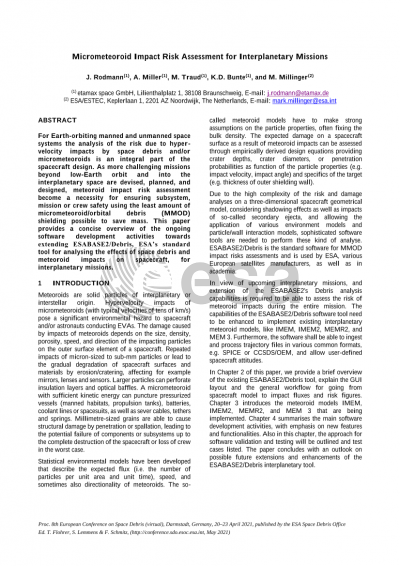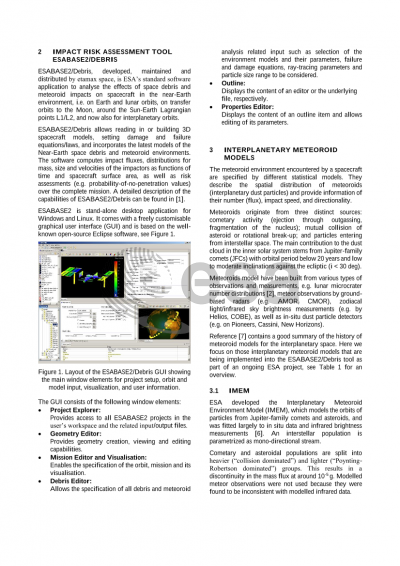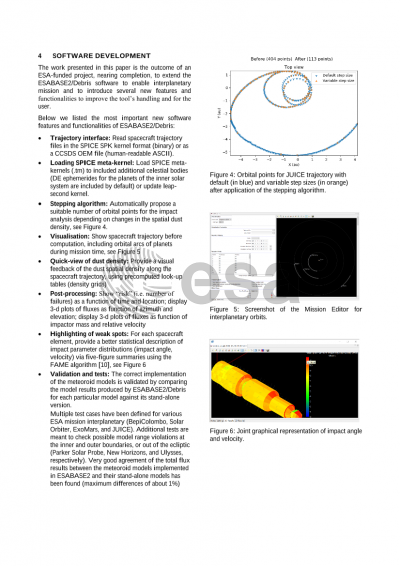Document details

Abstract
Meteoroids are solid particles of interplanetary or interstellar origin. Hypervelocity impacts of micrometeoroids (with typically velocities of tens of km/s) pose a significant environmental hazard to spacecraft and/or astronauts conducting EVAs. Repeated impacts of micron-sized particles or smaller lead to the gradual degradation of spacecraft surfaces and materials by erosion/cratering, affecting mirrors, lenses, sensors etc. Larger particles can perforate insulation layers and optical baffles. A micrometeoroid with sufficient kinetic energy can puncture pressurized vessels (manned habitats, propulsion tanks), batteries, coolant lines or spacesuits, as well as sever cables, tethers and springs.
Millimetre-sized grains are able to cause structural damage, leading to the potential failure of components or subsystems up to the complete destruction of the spacecraft or loss of crew in the worst case.
ESABASE2/Debris, developed by etamax space, is ESA’s standard tool to analyse the effects of space debris and meteoroid impacts on spacecraft in the near-Earth environment, i.e. on Earth and lunar
orbits, on transfer orbits to the Moon, and around the Sun-Earth Lagrangian points L1 and L2. ESABASE2/Debris allows importing or building 3D spacecraft models, setting damage and failure
equations/laws, and incorporates the latest models of the Near-Earth space debris and meteoroid environments. The software computes impact fluxes, distributions for impact angles and velocities as
functions of time and spacecraft surface area, as well as risk assessments (e.g. probability-of-nopenetration values) over the complete mission.
In view of upcoming interplanetary missions, ESA decided to fund the extension of the analysis and visualisation capabilities of ESABASE2/Debris to be able to assess the risk of meteoroid impacts during the entire mission. This paper will provide an overview of the project, summarizing the main software development activities, processing of trajectory files, implementation of various interplanetary
meteoroid models (IMEM, MEMR2, IMEM2), improvements in the mission and post-processing visualisation, and the validation approach. The paper will conclude with an outlook on ongoing extensions (e.g. implementation of the new MEM 3 model) and possible future enhancements of the ESABASE2/Debris impact risk assessment tool.
Preview






